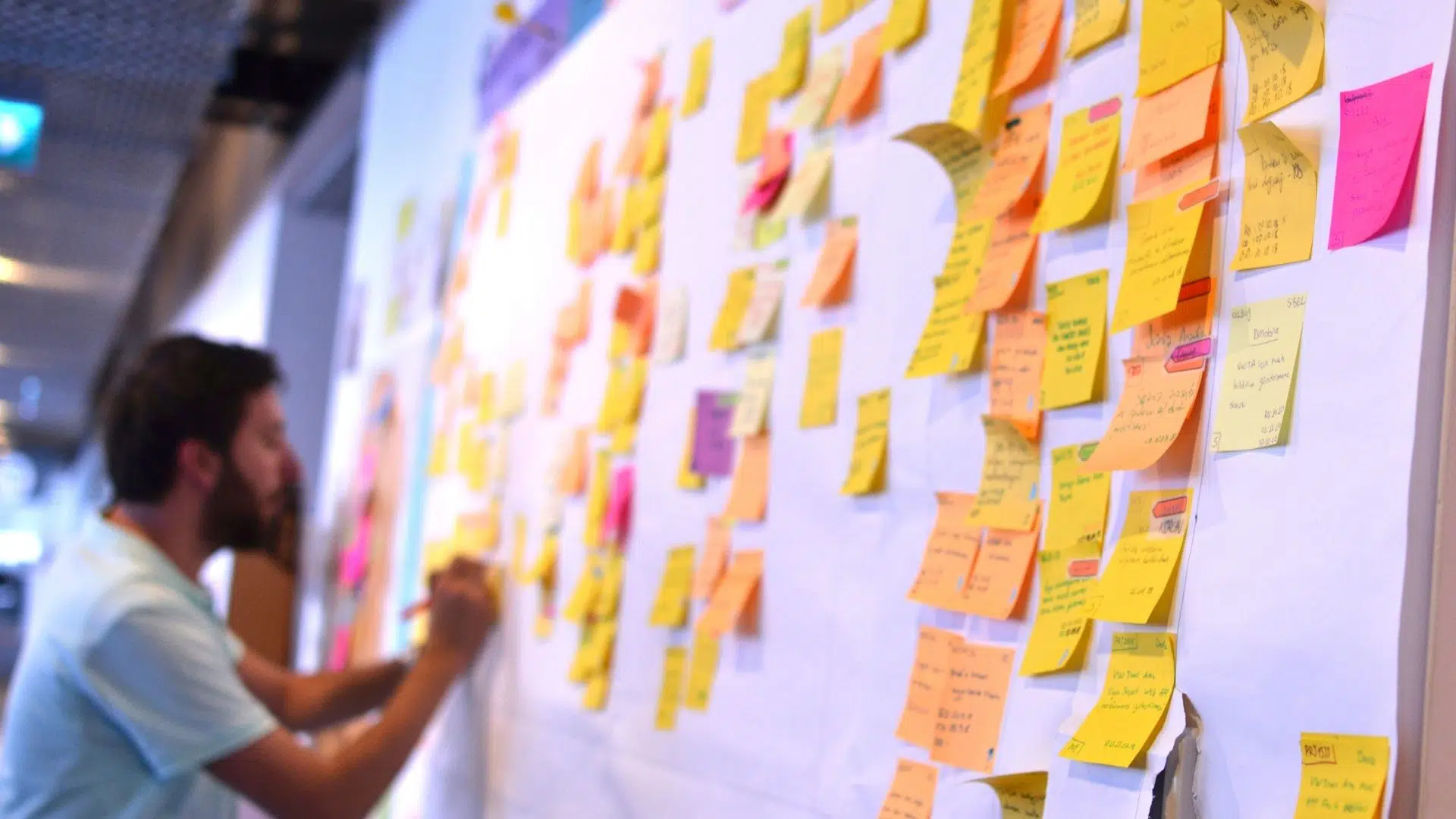Executive Summary
Anyone who tells you that the Agile methodology is the wave of the future already is behind the curve. With its focus on incremental delivery of usable software, the truth is that Agile is a thing of the present, and represents the most fiscally responsible software development philosophy that exists for federal agencies today. Recent adaptations to the TechFAR Handbook highlight flexibilities in the Federal Acquisition Regulation (FAR) to help agencies implement Agile methodologies, making it clear that our government is putting Agile at the forefront of their Information Technology (IT) projects.
Despite a general consensus in the federal space that Agile is the way to go, many federal agencies are faced with unanticipated challenges and find themselves stuck in a place where people can find themselves prefacing the word “Agile” with a few expletives. Agency leaders are finding that Agile implementations are far more complex than the simple adoption of daily stand-ups and sprint planning. Successful Agilists know that a true Agile implementation requires leaders to engineer the most difficult task imaginable—changing people’s minds.
According to the 2014 TechAmerica Federal CIO and CISO Survey, 83% of respondents indicated their organizations are using Agile or rapid application development processes, but 40% of those using Agile reported their organizations lacked the maturity and organizational knowledge to fully exploit the benefits of Agile. This lack of organizational maturity and knowledge is unrelated to the “difficulty” associated with Agile ceremonies. Unobvious to many, most Agile problems are people problems. As agency leaders embark on the journey toward an Agile organization, understanding the psychology of groups within organizations and how to leverage these dynamics appropriately becomes the most critical success factor for an Agile transformation. An Agile transformation works in tandem with organizational change. Although this sophisticated interplay can be examined through multiple lenses and addressed through various approaches, this whitepaper will solely:
- describe the six tough mindsets that emerge when leaders execute Agile transformations;
- explain how these difficult mindsets affect the progress of Agile teams; and
- share how you can leverage this knowledge to enable enterprise agility across your organization.
The Six Tough Mindsets You Will Encounter in Your Agile Transformation
By including phrases like “welcome changing requirements,” “must work together daily,” “build projects around motivated individuals,” “Give them the environment and support they need,” and “trust them to get the job done,” Agile principles extend beyond traditional software development approaches into the realm of transformational philosophy. Becoming familiar with the difficult mindsets you will encounter when implementing Agile across an enterprise will mark the difference between agencies that do Agile and agencies that are Agile. The following mindsets represent simplified archetypes of challenging attitudes you may face at all levels in your organization, their root causes, and their effects on teams.
Mindset 1: Been there, done that.
The “been there, done that” mindset is highly resistant to change and can be identified by comments like, “what can you possibly tell me that I don’t know after 25 years in this industry?” or “this isn’t new, we’ve done this since the ’70s.” This mindset can be identified by individuals who are seemingly enthusiastic about change, but who try to retrofit the Agile methodology to older approaches e.g. forcing sprint cycles to work within a legacy gate review process. This mindset can prevent an agency from becoming Agile because the focus is on similarities to what was done in the past, rather than the value the differences may bring to the future. As a result, your agency is anchored to remnants of legacy software development methodology that may contradict the Agile principles you are trying to implement. For example, rather than using the flexible adaptations to change that are part and parcel of an Agile environment, agencies continue to use traditional Change Control Boards (CCB) to manage change.
Although you may feel inclined to remind this mindset of the value of Agile and highlight its differences, your approach to change this mindset should actually focus on what generated the resistance: insecurity. Identify their strengths, and promote the Agile ceremonies that emphasize those strengths. Before long, your “been there, done that” mindsets will become “I am here, and I am doing this.”
Mindset 2: Awesome sales pitch, bro.
The “awesome sales pitch, bro” mindset is characterized by statements like, “what’s this guy trying to sell?” or “yeah, I wonder how much he gets off the top for this.” During your Agile transformation, this mindset is most resistant at the beginning of your effort and can influence others in the team to become doubtful of the motivations for an Agile change. If unchecked, this doubt is especially problematic because it assumes the Agile coach, the primary transformational agent, has an ulterior motive. They also may resist Agile development on cadence set by the business users, doubting that anyone but technical staff can set the pace for release. The “awesome sales pitch, bro” mindset is motivated to come on board, once he trusts that the leader’s intentions are not self-serving. Getting buy-in from this mindset requires transformational leaders to treat them as equal partners, almost over-informing them of details. Their doubt in your Agile transformation will diminish as they feel this equity.
Mindset 3: It’s not me, it’s you.
You can identify the “it’s not me, it’s you” mindset through remarks such as, “this would totally work if Jim wasn’t always such a jerk,” “I can’t get anything done because Tina is always (insert anything Tina does here),” or “I can really see how THEY may need to do Agile.” This mindset can see the value of the Agile change, but they do not feel they are part of the team. For example, traditional managers may feel that their utility is to make sure others are doing their work. Agile teams are self-organizing, so even “managers” should be taking stories off the backlog and addressing them. This mindset is detrimental to an Agile transformation because mutual accountability and team progress are fundamental to the philosophy. You can help the “it’s not me, it’s you” mindset become a functioning member of the team by introducing a superordinate goal, i.e. a goal in which two or more people or groups must be involved to achieve it. Superordinate goals engage the non-team players because they know they cannot achieve the goals alone, and require skills or resources from other team members to reach them.
Mindset 4: Yeah, but…
“Yeah daily stand-ups are a good idea, but we have telework days,” and “yeah it makes sense to develop working software at every sprint, but we have dependencies on third-party teams” are hallmark statements in the “Yeah, but” mindset. This mindset accepts Agile principles on the surface but feels compelled to either offer alternatives or refutations. They will often go along with change but will present small resistances throughout the transformation. These minor resistances will often frustrate leaders who question why they give you a hard time when they are generally participatory. Individuals with this mindset can often disrupt the transformation because their alternatives and refutations spark unproductive debates. Leaders must recognize that the “yeah, but” mindset is rooted in anxiety. To minimize the frequency of “yeah, but” debates and alleviate anxiety, team members and leaders should respond with a request for their action plan. You are translating the anxious energy into productive energy. For example, if a dependency on a third-party team is cited as a reason not to get things done within a sprint, inquire how the “yeah, but” mindset is going to engage this third party as part of the team.
Mindset 5: Cool. Whatever.
The “Cool. Whatever” mindset is not against your Agile transformation but is not championing your effort either. You will hear this mindset say things like, “sure, whatever you guys wanna do is fine with me,” and “do we get a raise for doing it this way?” This tough mindset is waiting to take and execute on directive orders. While “Cool. Whatever” mindsets generally deliver on what they are directed to do, their mindsets diminish the value that Agile can bring to the enterprise. Agile requires collective wisdom and collaborative contributions from each team member. While this mindset is much easier to tolerate in day-to-day operations than some of the others, it can bring more power to your Agile transformation if addressed.
Mindset 6: Just show me the light!
The “Just show me the light” mindset is energetic, excited, and feels ready to take on and even lead your Agile transformation. Their declarations will include, “awesome, it’s about time, let’s do this!” and “great, when do we start?” This mindset is difficult to separate from Agile team members who believe in Agile, understand it, and are ready to do something different to get there. The key difference is that the “just show me the light” mindset is so overzealous about the idea of a transformation that they rush to understand concepts, learn them incorrectly or superficially, and lead team members in the wrong direction. This mindset may continue in a linear development pattern, performing mini-waterfalls within a sprint, rather than designing, building, and testing each feature before moving to the next feature. The energy of this mindset is contagious and their enthusiasm can be harnessed to motivate your Agile teams. To help “just show me the light” mindsets move in the right direction, you need to displace the enthusiasm, while teaching them the correct way to be Agile. A displacement technique could be to put them in charge of a specific task, as they correctly learn other concepts.
Conclusions
Despite the logical value that Agile’s ceremonies, incremental delivery, and adaptive prioritization provide, agency leaders can often find themselves low on the enterprise agility spectrum. CIOs wonder why their Agile transformation is so expensive while remaining slow and flawed. An agency’s most valuable instrument to facilitate a true Agile transformation is to bolster their technology investments with an understanding of how to mobilize their people toward change. This mobilization requires an IT vendor that thinks outside of the boundaries of Agile as a software development methodology and brings hands-on lessons learned to share.
To view a PDF version of this white paper, please click here.




